This time last year, I was done with wargaming, ending 20 years of involvement in a hobby that had even included a brief stint managing my local Games Workshop, and a much longer stint working its tills and painting its models. I was finished, my enthusiasm drained by Games Workshop’s focus on younger gamers and the win-at-all-costs mentality of games such as Warmachine and Hordes. The thought that I was through with my first real hobby was incredibly sad, and made me feel old before my time. I was wrong; what I actually needed was something to unlock my youthful exuberance once more.
That something was Malifaux.
For those not familiar with the hobby, wargaming involves assembling and painting scale figures (generally plastic or metal, generally showing humans to be about two inches high) and then fighting battles with them to a codified set of rules. It combines the solo activities of assembly and painting with the social aspect of playing games with friends and strangers, which can make it pretty all-consuming, if you let it.
Malifaux’s publisher Wyrd Games have taken a whole bunch of things I really like about wargaming and thrown them in a blender, whizzing them together into something unique. Beautiful models? Check. Thoughtful, tactical gameplay? Check. Narrative possibility? Check. A series of squares arranged in a visually pleasing pattern? That, too.
My eye was first caught by Malifaux’s aesthetic, a mix of gothic horror, steampunk, and the Wild West, with samurai swords and prankster gremlins thrown in for good measure. The models are absolutely stunning, not just in terms of how much detail Wyrd Games crams into them but how much character oozes from every one.
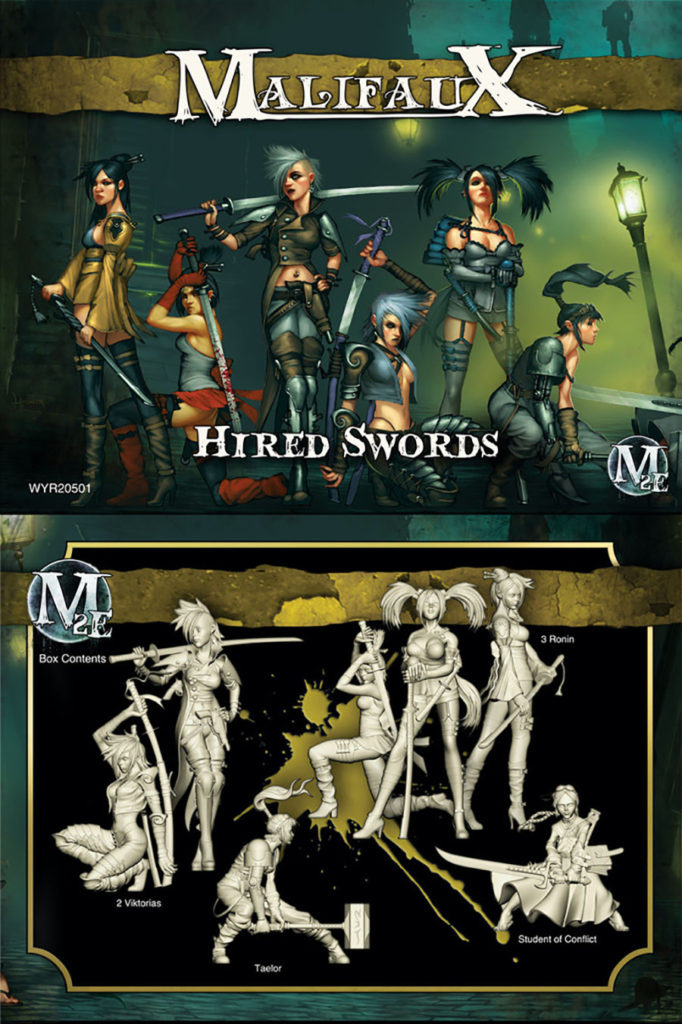
Malifaux’s setting is the source of its bizarro mash-up aesthetic. In the early 19th century, factions vie for control of the titular city of Malifaux, accessible only through a hole in reality known as The Breach. It is the sole source of Soulstones, a mystical mineral that serves as both currency and as fuel for magic, whether that be raining down elemental destruction or powering a robotic golem, summoning the dead or sending your enemies gibbering mad like Lovecraftian protagonists after a trip to the forbidden library. It’s a fantastical alternate history that allows convict gunslingers to gun down parasitic demons, mechanically-augmented union workers to go to battle with malevolent puppets, and undead reporters to pry into the affairs of cosmic horrors.
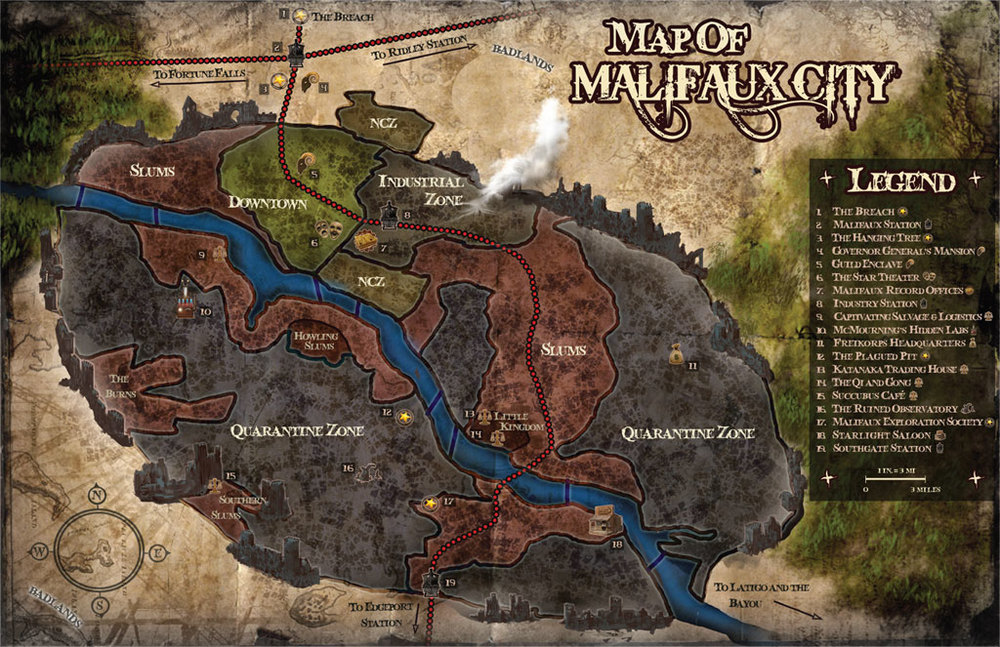
The city of Malifaux feels alive with possibility.
All of which are rendered beautifully on the tabletop. Malifaux switched all of its models to plastic in 2013, so the days of lumpy metal figures are well behind it. They are still catching up, so some models are currently only available in metal, but generally it’s better to wait for the plastics to be released. The new models are light years ahead in terms of detail and character, which makes them an absolute pleasure to paint.
But.
These models are not designed for novice modellers. Hell no. Beauty exacts its price; even the most basic model comes in multiple parts, some of which are so small they would pose a choking hazard to Lilliputians. Example: the Resurrectionist master Dr. McMourning has a zombie Chihuahua as a companion–the model is cute in a rotten kind of way, and is as big as the nail on my little finger. It also comes in four pieces!
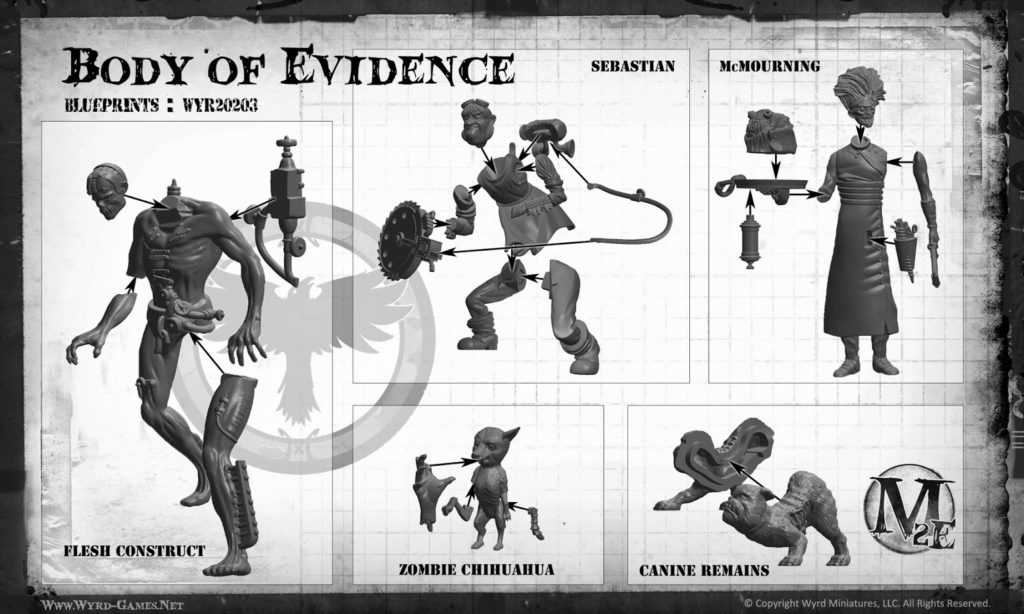
This is not a one-off–I have lost count of the number of times I have looked at a Malifauxsprue and wondered just where on Earth all these tiny pieces go, and whether it was necessary for them to break everything up so small. I’ve also spent a fair bit of time on my knees, searching the floor for scraps of grey plastic. The worst offenders are the cables, found on anything even remotely robotic; the cables will often flow up and away from the model, which looks amazing but means that half the time they snap when you clip them out (maddening when you realise that every models fits together in a single specific way, so broken parts become doubly infuriating if you’re not sure exactly where they go). Heed this warning: if the idea of spending several hours sticking together six or seven models seems like too much, or the thought of so many fiddly little pieces gets your hands shaking, then Malifaux might not be for you.
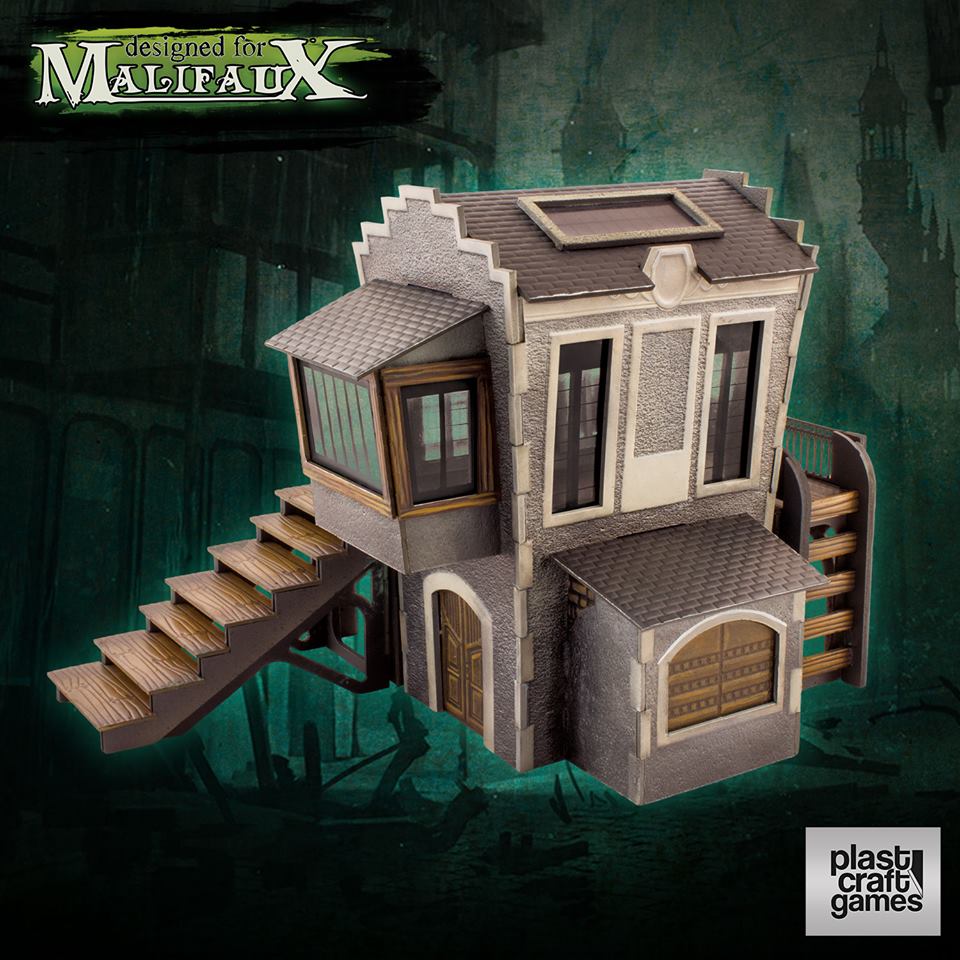
If you can get your models together without losing your sanity, you’re ready to game. And this is where Malifaux really shines.
Eventually.
Let me explain. To play Malifaux you first pick your chosen faction: the Guild (tyrannical enforcers of the law); the Arcanists (unlicensed mages of all stripes); the Resurrectionists (necromancers); the Neverborn (the city’s original inhabitants, monsters embodying human fear that call the city home); the Ten Thunders (a ragtag bunch of spies and infiltrators); the Gremlins (the light relief); and the Outcasts(mercenaries and everyone else). Interestingly, you generate random objectives, known as strategies and schemes, before you pick your combatants, allowing you to tailor your force to the scenario you’ve just created (and subtly encouraging you to expand your collection so you have the models to cover every situation, a trick I have fallen for hard). A crew consists of a master, its leader and most powerful model, and a hand-picked selection of models ranging from mighty henchmen to rather pathetic (but cheap) peons. Each model has a Soulstone cost; pick your models to an agreed value and you’re away.
Sound simple? It’s not.
I love to share my enthusiasm and it pains me that Malifaux is not beginner friendly. The basic rules aren’t so hard: they take up less than a hundred pages, come complete with easy-to-follow pictures, and everything makes logical sense, even if the rulebook sometimes feels like it was organised by throwing concepts into a pot and drawing them out at random. What’s tricky is that each individual model has its own special rules, all of which intersect and combine and nullify each other in a dizzying number of ways. Every single model in the game has at least one unique attack, sometimes two or three, plus unique abilities such as spellcasting or psychological effects, and a lot of models can also take upgrades, which complicates things further. Trying to remember your own models’ rules is hard enough to start with, without even factoring in that to be truly effective you need to know your opponent’s rules as well.
Because play alternates, with players taking turns to activate and use a single model, the game can be chaotic and fluid, flipping and changing in a matter of seconds; unfortunately, this can easily lead to analysis paralysis (the feeling of being overwhelmed by all the possible options). Couple this with how hard it can be just to get the bloody models stuck together and you have a game that can be downright hostile to newcomers.
Obviously, this isn’t good. Bear with me. You see, although this commitment to diversity is Malifaux’s main weakness, making it hard to get into and baffling to play the first half a dozen times, it’s also its biggest strength. Yes, it’s somewhat cumbersome and opaque and there will be games where you get beaten down by abilities and combinations you never saw coming because, honestly, who has time to memorise three books’ worth of models? But persevere, and you will be rewarded. Learning Malifaux is like learning to walk: it’s hard, it takes time, and you’ll fall on your arse more than once, but when you master it, the whole world opens up.
Okay, maybe not that far. But when it clicks, Malifaux is glorious.
Malifaux is a tactician’s dream. Wyrd have done away with dice, and instead, use a “duel” system any time something random occurs (does the spell go off, is the bullet on target, does your favourite model fail to attack because the enemy has made them soil themselves in terror). Players draw from a deck of cards, called their Fate Deck; the aggressor draws a card and adds it to the relevant statistic, and the defender does the same (only using their defensive stat). Highest number wins. So simple, and yet deep enough to drown in.
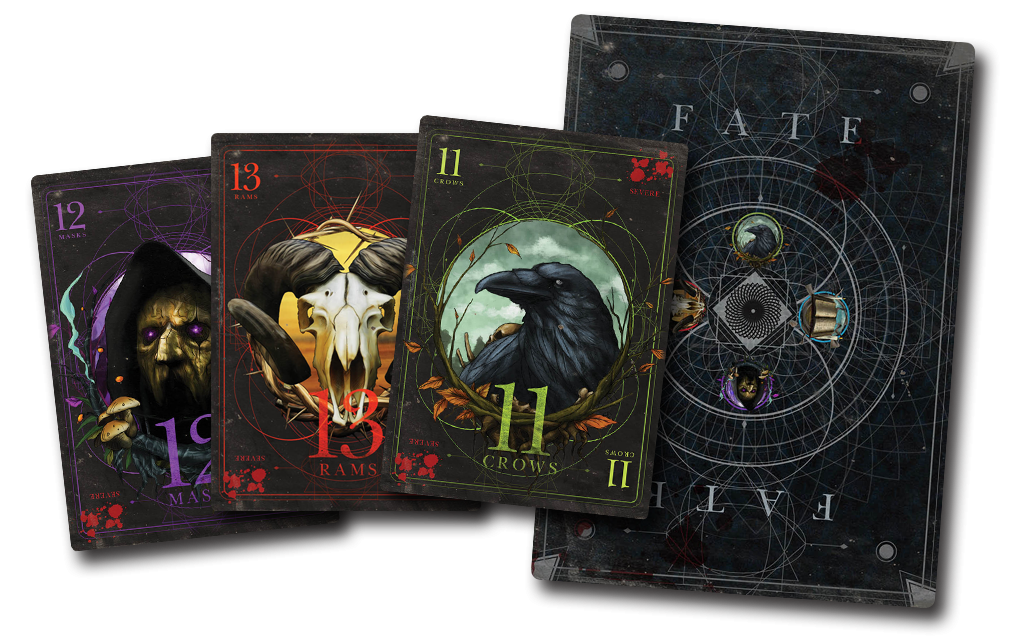
Why is this so good? Firstly, it means that both players are involved at all times; at no point are you left in downtime mode, watching your opponent move all of their models and then rolling a bunch of dice at you (figuratively speaking). Secondly, it allows special effects and abilities to “trigger” off of the suit you have flipped, so a certain suit when you attack someone could do more damage or set them on fire or one of a hundred other things. Thirdly, although each draw is random, there are only a finite number of cards in a deck, so eventually your luck has to balance out, doing away with the complete randomness of dice.
The Fate Deck’s final masterstroke is the control hand. Each draws six cards at the beginning of the turn and can, under most circumstances, use these to “cheat fate,” replacing the card they have flipped with one from their hand. Suddenly, a game of Malifaux leaps up from something abstract just happening on the table and takes on aspects of poker, checking your opponent’s body language, bluffing about what cards you have, deciding when and where to unleash your powerful cards and when to hold them back, just in case.
Take the Black Joker, the worst card in the game, which scores you an unmodifiable, uncheatable zero. You’d think that if you drew this into your control hand, you’d want to get rid of it as soon as possible (some abilities let you discard a card to power them, and players can discard any remaining cards they like at the end of each turn). But you’d be wrong; if you keep that horrible, unlucky, piece-of-shit card in your hand, you know exactly where it is at all times, and won’t draw it out of your Fate Deck at just the wrong time. But, of course, you’ve then only got five good cards to choose from…
Decisions! This minute-by-minute, constant engagement and constant choice is what makes a game of Malifaux so good. It feels like a really taxing puzzle with continually moving parts. After a particularly good game of Malifaux, you will feel smarter, which is not a feeling I’ve ever had with any other wargame.
There is so much more to playing Malifaux that there isn’t room to get into; even movement, usually the most boring part of a wargame, is alive with possibility, with all sorts of pushes, pulls, placements, and pounces waiting to be discovered. Sometimes you can win a game after being wiped out; if the objectives are right, your models can die with the peaceful satisfaction of a job well done, while your opponent is left covered in your blood, defeated. There are degrees of success to almost every action, and dozens of viable play styles. The game is also darkly funny, and has a rich background full of dark, morally-ambiguous characters, most of whom you can then bring to the tabletop.
Any negativity I have about Malifaux is born of sheer frustration. I can’t tell you how much time, money, and effort I’ve put into this game in the last year, because my loved ones might find out and not love me anymore. I want all my gaming friends to get into it, so I have more people to play against, more models to admire, more battleground puzzles to solve. I’ve even gone so far as to purchase the spin-off roleplaying game to maximise my time with the setting. But I know that this isn’t going to happen.
I love Malifaux. Everything about it, from the crazy background to the beautiful models to the unique play mechanics feel as if they were purposely built with me in mind. I spent two hours podcasting about it at the end of last year, and we still had to cut stuff out. But it’s a hard sell; for beginning modellers or casual gamers who just want something light they can pick up as and when, it’s borderline incomprehensible. There are just too many moving parts, too many options all at once, for it to be rewarding to just dip in and out of. But if you are willing to grit your teeth, take your time, and immerse yourself, it offers you some of the best gaming experiences and most gorgeous models you’ll ever own. I’m glad I’ve found Malifaux, and all those years of hobby gaming have not been wasted. In fact, they feel like they were just training.